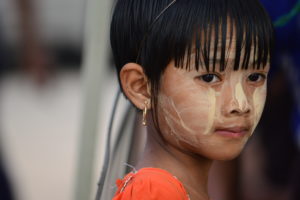Our Commitment to Myanmar
Building Assets is committed to providing viable solutions by building schools and providing education for girls displaced by war in conflict-affected areas of Burma.
According to the United Nations, Myanmar is among the poorest and least educated countries in Asia; it ranks 145th out of 188 countries on the United Nations Human Development Index and about 55% of children live under income poverty.
The average adult only has only about four years of education, but are anxious for their children to receive opportunities they never had themselves. Many rural villages do not have schools, or only have schools through the primary level, so children have limited or no access to education.
- The remote regions of Myanmar are home to countless ethnic minority groups who face enormous challenges, from ongoing religious violence to a struggling education system.
The internal conflicts have forced hundreds of thousands of people to flee their homes. While some have left for neighbouring countries, many remain displaced in Myanmar living in internally-displaced camps (IDP).
- Nearly 200,000 children are living today in conflict-affected areas of Myanmar. Too few attend school because of the ongoing civil war and lack of qualified teachers, especially in remote rural regions.
Displacement caused by armed conflict for these children does not happen once- but multiple times, making it challenging to establish spaces for learning.

A girl living in a conflict-affected area is 90% more likely to be out of secondary school than her counterparts living in areas without unrest.
Conflict and fighting are most acute in both northern Shan and Kachin State, where thousands of people have been displaced and remained in camps since the fighting resumed in 2011.
When Myanmar signed a ceasefire, hopes were high that the country would be free of violence. Instead, war continues in many parts of the country, displacing children and forcing girls’ to leave their village or travel long distances for education.
By investing in the quality of education through improved access and policy intervention, we can improve student learning outcomes – and therefore their lives. By providing access to education for young girls at an early stage, we can lay the foundation for a brighter future for Burma and begin to prepare these young students to be the country’s next leaders.
